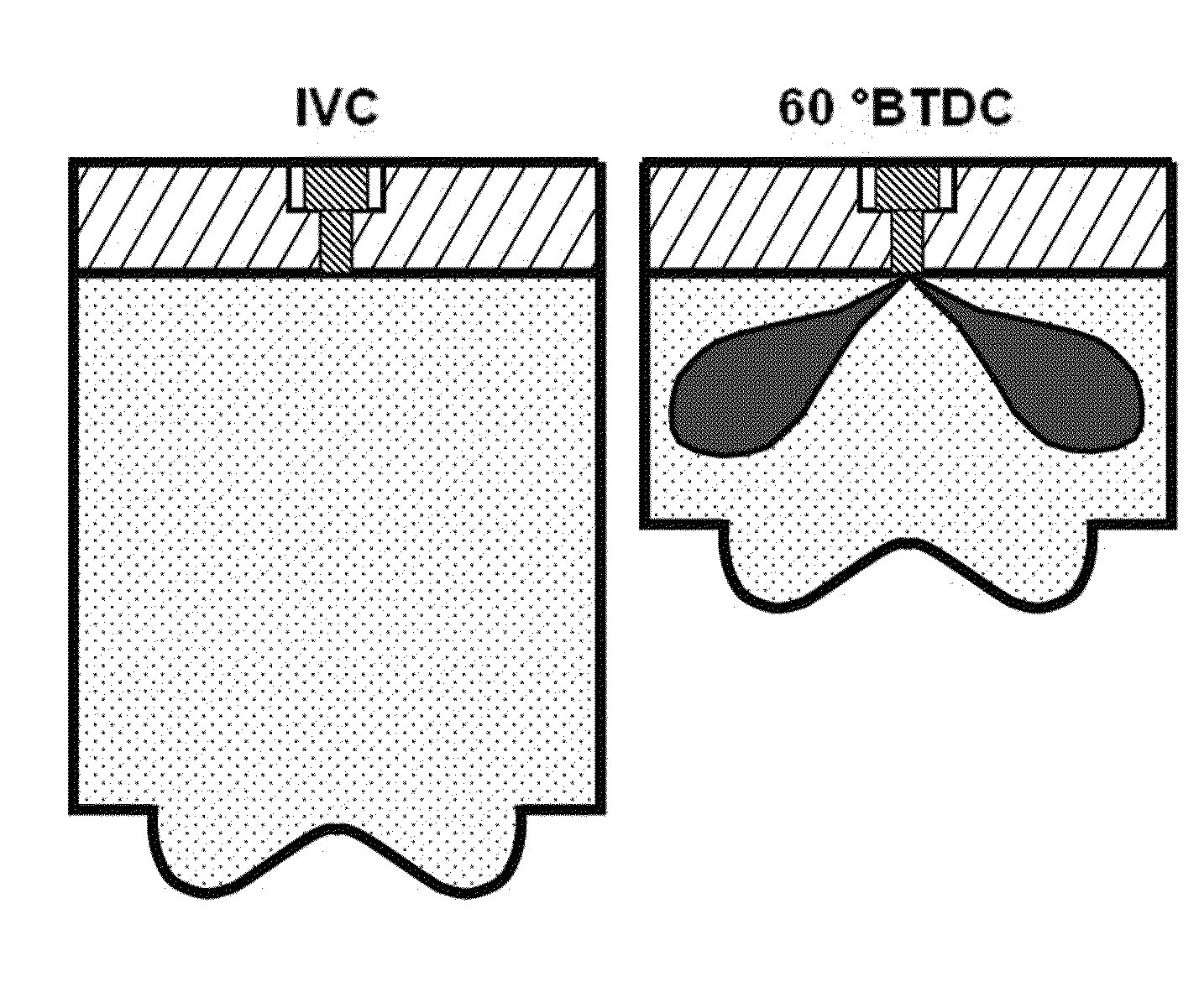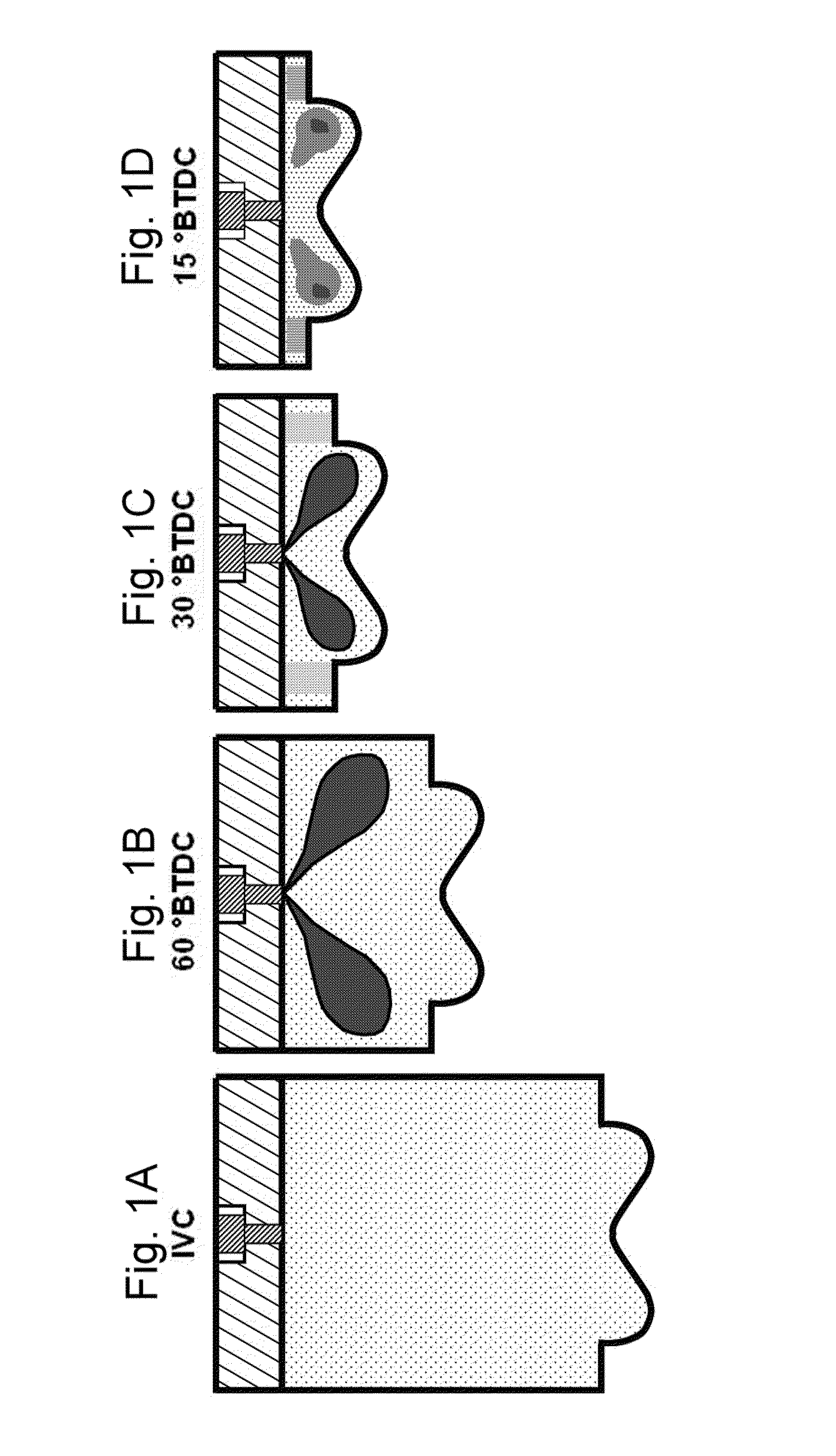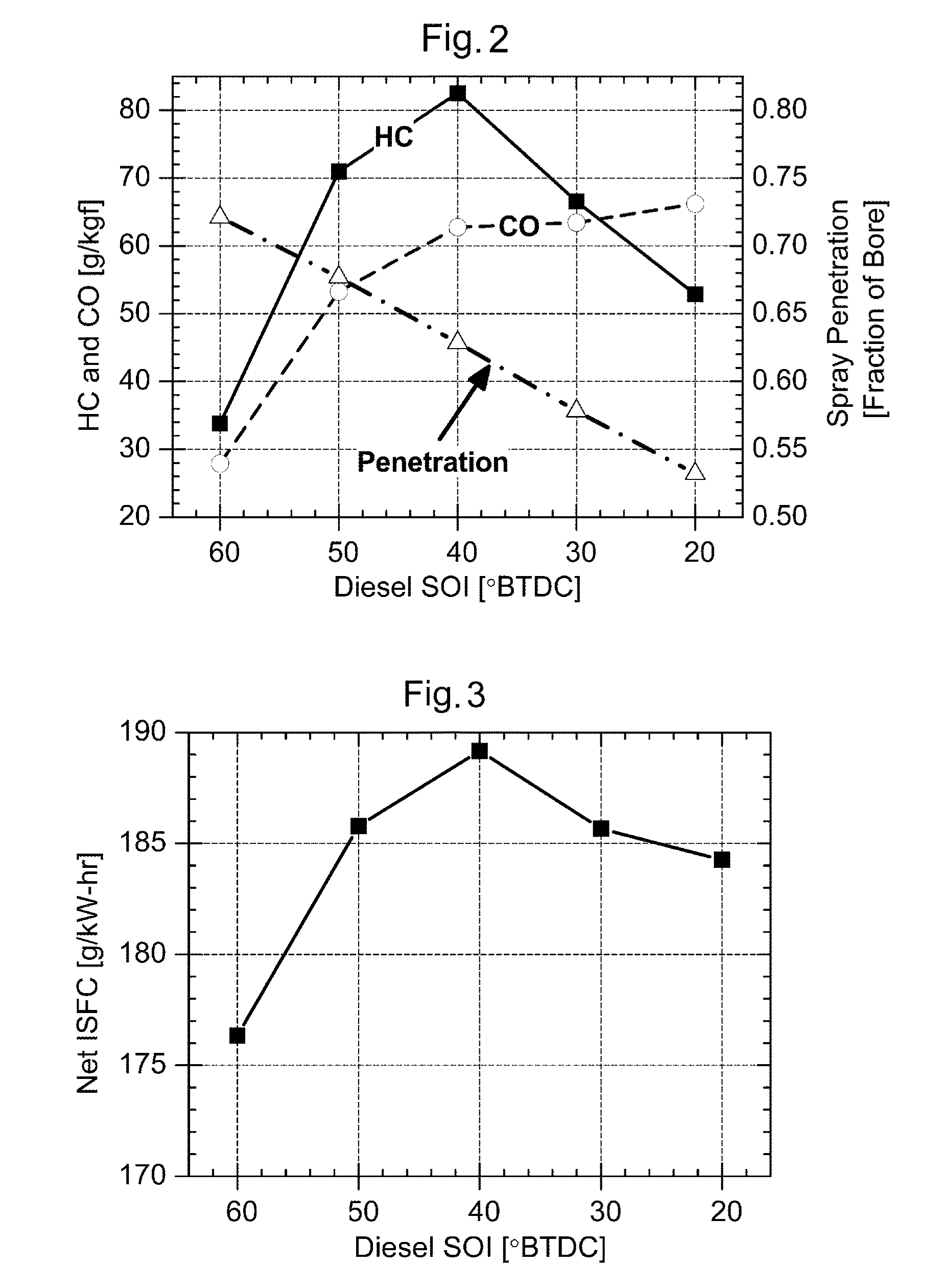Engine combustion control via fuel reactivity stratification
a fuel reactivity and engine technology, applied in the direction of electric control, machines/engines, mechanical equipment, etc., can solve the problem of low combustion ra
- Summary
- Abstract
- Description
- Claims
- Application Information
AI Technical Summary
Benefits of technology
Problems solved by technology
Method used
Image
Examples
Embodiment Construction
[0027]Before reviewing the invention further, it is initially useful to discuss the concept of “reactivity” in greater detail. In the context of this document, the term “reactivity” generally corresponds to the cetane number of a substance, and / or the converse of the octane number of a substance. The cetane number measures the speed at which a fuel (or other substance) starts to auto-ignite (spontaneously burn) under diesel operation conditions, i.e., under high pressures and temperatures. In a diesel engine, a fuel with higher reactivity (i.e., higher cetane number) will ignite more quickly than a fuel with lower reactivity. In contrast, the octane number—a measurement usually used for gasoline engine fuels rather than diesel fuels—is a measurement of a substance's resistance to autoignition. In general, diesel fuels have high reactivity (high cetane number / low octane number), and gasolines have low reactivity (low cetane number / high octane number).
[0028]As discussed above, the inv...
PUM
 Login to View More
Login to View More Abstract
Description
Claims
Application Information
 Login to View More
Login to View More - R&D
- Intellectual Property
- Life Sciences
- Materials
- Tech Scout
- Unparalleled Data Quality
- Higher Quality Content
- 60% Fewer Hallucinations
Browse by: Latest US Patents, China's latest patents, Technical Efficacy Thesaurus, Application Domain, Technology Topic, Popular Technical Reports.
© 2025 PatSnap. All rights reserved.Legal|Privacy policy|Modern Slavery Act Transparency Statement|Sitemap|About US| Contact US: help@patsnap.com



